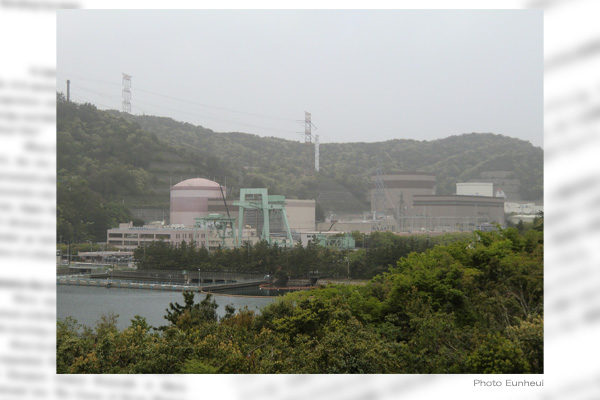The Nuclear Regulation Agency at a safety review meeting on July 26 concluded that Unit 2 of the Tsuruga Nuclear Power Station that Japan Atomic Power Co. aims to restart in Fukui Prefecture could not be recognized as complying with the new regulatory standards. The agency said the company’s claims concerning the two controversial points --- whether the K Fault near the reactor building may move in the future and whether the D1 Fault just under the building is connected to the K Fault --- were ambiguous and lacked scientific grounds.
In response, the company proposed to clarify the ambiguity through additional researches and to consider amendments to its application for permission to change the installation to bring the nuclear reactor facilities into compliance with the new regulatory standards. The proposal will be discussed at the next Nuclear Regulation Authority (NRA) meeting. If the proposal is rejected, it will be impossible to restart Unit 2.
Engineered safety measures can lower risks
In an interview with Japan Broadcasting Corporation known as NHK immediately after the safety review meeting, the author said: “At the review meeting where the regulatory authorities are clearly trying to rush a conclusion, Japan Atomic Power and the regulatory side differed on many points. The NRA is reviewing the reactors not for the purpose of decommissioning them. They should accumulate mutually satisfactory discussions rather than hasty discussions.” He insisted that the review process should be continued, including additional researches by Japan Atomic Power.
Regarding the D1 Fault as the focus of the discussions, The author said: “Apart from ‘epicenter faults’ that cause earthquakes, we can assess the effectiveness of engineered safety measures for faults like cracks that move in conjunction with other active faults. The review system should be changed to one based on science.”
The author once compiled a report for the Atomic Energy Society of Japan’s expert panel named “Fault Activity and Engineered Risk Assessment.” The report found that engineered safety measures could reduce the risk of a movement of an active fault just beneath a reactor building causing a major accident to 1 in 10,000.
The reference for the engineered safety measures was advanced countermeasures against active faults taken by the Japan Railway Group that runs railways across Japan where about 2,000 active faults exist. The JR Group conducted a field survey of a complex active fault consisting of three layers under the Shin-Kobe Station on a Shinkansen bullet train line and assessed the magnitude of displacement of the active fault during the Shinkansen’s service period is up to 5 cm, before taking engineered safety measures. In the later Great Hanshin-Awaji Earthquake, the displacement was limited to 2 cm, with minor damage seen to the railway.
Decommissioning of Tsuruga Unit 2 will have serious impacts
The current safety review for the restart of nuclear reactors is carried out in accordance with the new regulatory standards of 2013. The standards call for seismic retrofitting measures against earthquakes and seawall constructions against tsunami waves to improve safety. As for active faults, the review examines only whether they exist or not, without discussing any engineered safety measures. Thus, safety will not be improved even if the review takes 10 years.
Any decision to decommission Tsuruga Unit 2 will affect safety reviews for other nuclear reactors, increasing the risk of major power outages attributable to a tighter power supply-demand balance not only in Fukui Prefecture but across Japan. In the event of a major power outage, nuclear power plants could lose external power supply, leading to serious accidents. Hospitals as well may lose electricity supply, exerting serious impacts on people’s lives. The NRA needs to consider such a situation. It should revise the new regulatory standards to take engineered safety measures against faults and examine their effectiveness.
Tadashi Narabayashi is a specially appointed professor at the Tokyo Institute of Technology and a director at the Japan Institute for National Fundamentals.


